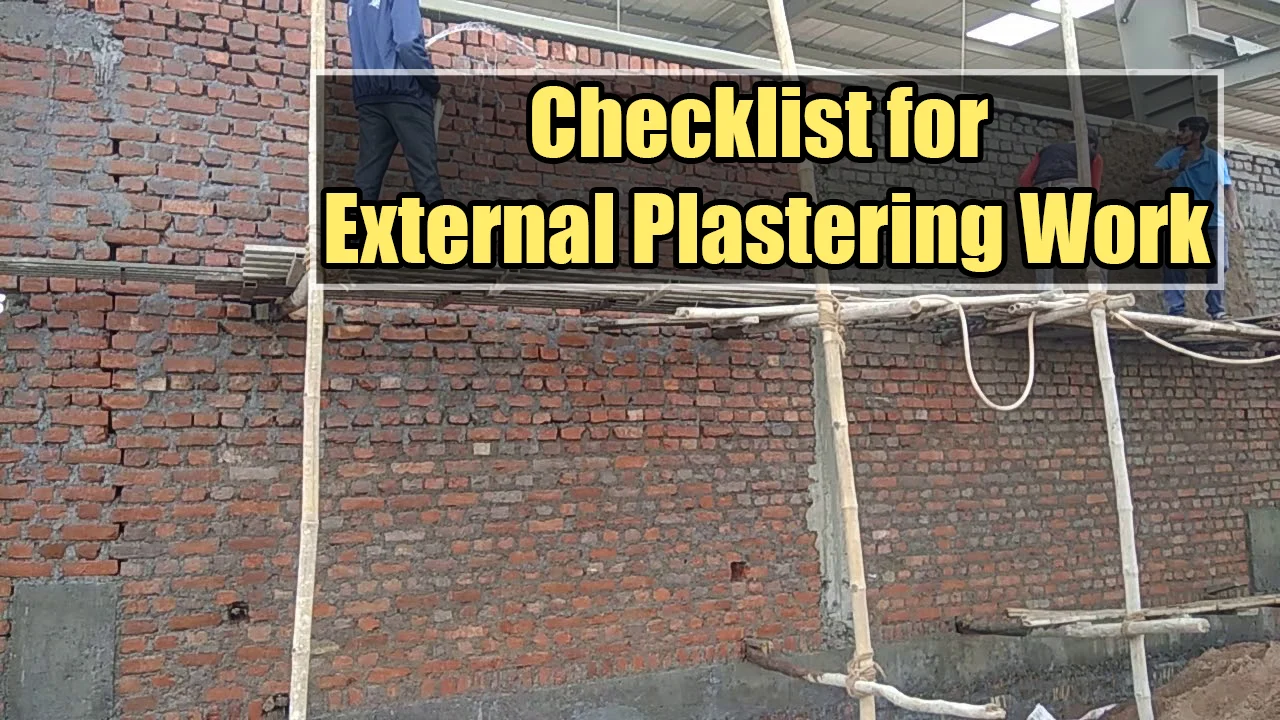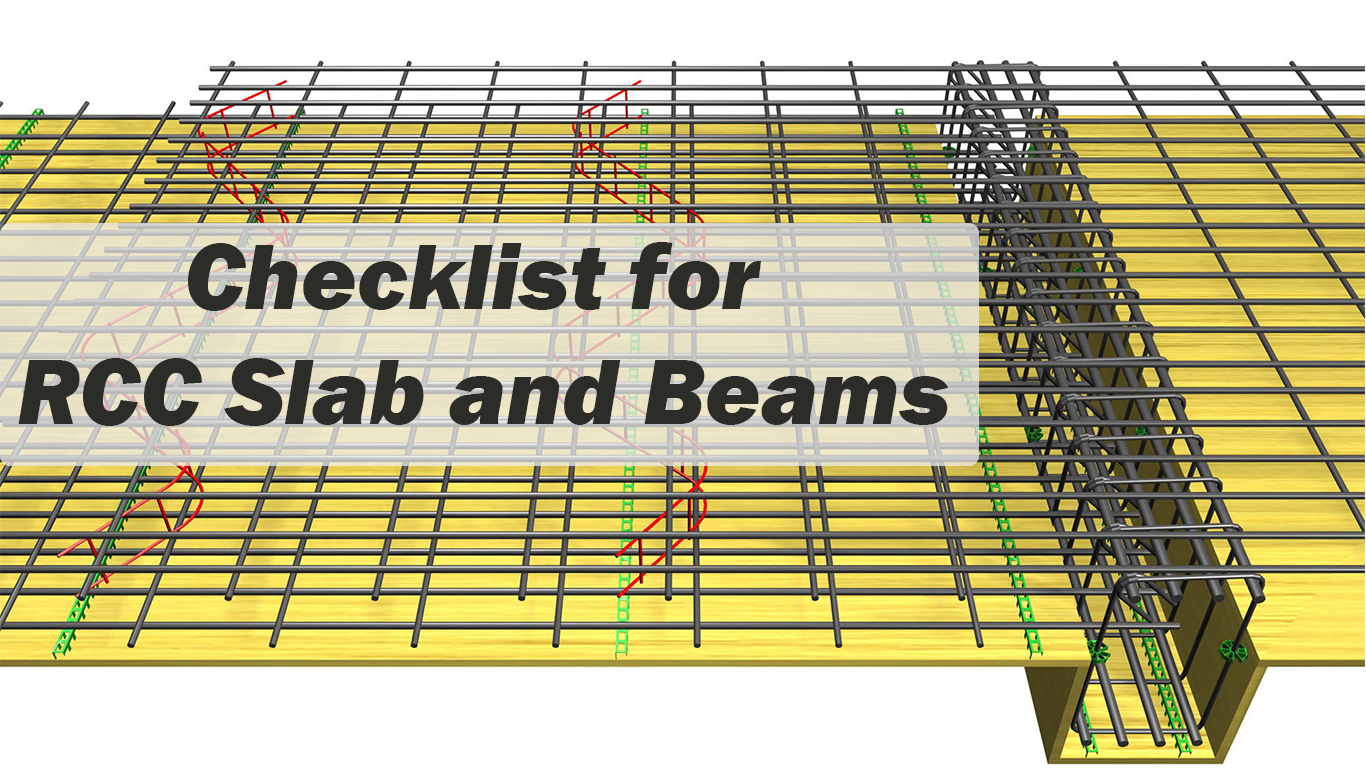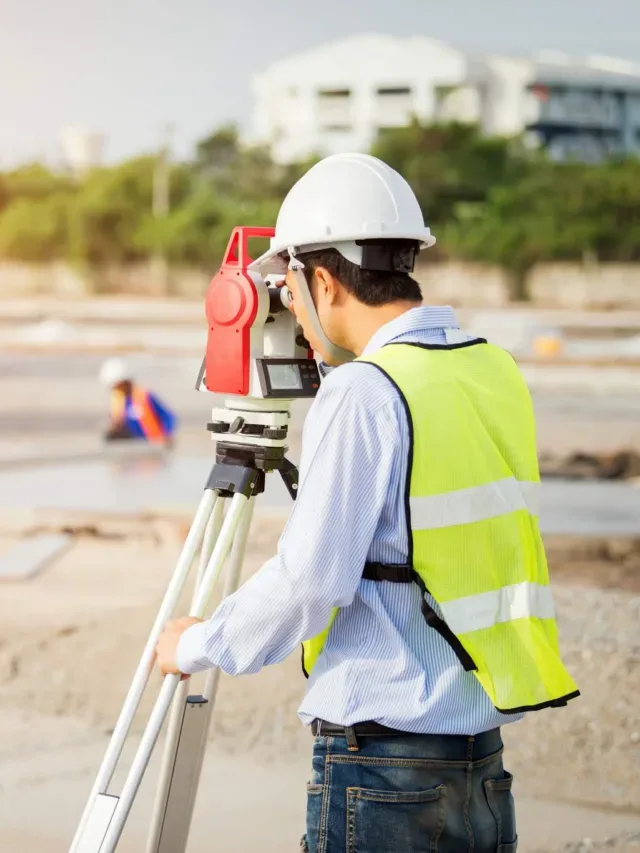Checklist
Checklist for External Plastering Work

Checklist for External Plastering Work
The following list of points to be follow
ed in construction work for External Plastering Work given below
- Ensure that the Block or Brick masonry and concrete surfaces are found clean, free from dust, loose materials, oil, grease, mortar droppings, nails, metal strips, wooden pieces, binding wire etc.
- Erect a double scaffolding without making a hole in the wall (Or erect a single standing scaffolding by taking support of wall as directed by the higher authority).
- Fill the external gaps on the side in masonry & beam or column joints with rich mortar and complete the socketing work.
- Fix 6” wide chicken mesh on the joint of RCC & Masonry wall (Nailing of chicken mesh should be at a distance of 230mm interval).
- Take the plumb or line from top to bottom at all the edges to ensure the accuracy and keep the thickness of the single coat plaster at minimum 10-12mm uniformly.
- If a beam or column is bulged out, then chiseling is to be done with a small concrete breaker or a sharp chisel and hammer, only after the RCC designer permits it.
- Check all the elevational features and window openings as per the architectural drawings.
- Ensure that masonry work is complete in all respect and the surface to be plastered should be dampened a day before plastering.
- The above process should begin at least two days prior to the plastering so that it may gain strength.
- Sand sieved properly and silt content within permissible limits i.e., less than 8%. If silt content is more than 8% then wash the sand before use.
- Take sand proportion 1:5 with machine mix and the mixed mortar should be placed within half an hour. Add waterproofing chemicals per bag into the mix as per the recommendations.
- After the preparatory measures, start plastering, ensure that no uneven surface is observed.
- Roughen the surface with wires for better bonding with the second coat.
- Ensure that for all chajjah, projection should be finished with a protective drip mould (pani patti) at the bottom of the chajjah.
- Curing of single coat should be carried out then wait for 5 days and apply the second coat plaster with punch finish, thickness should not be less than 6mm & not more than 10mm.
- Curing of double coat plaster shall be minimum of 7 days.
Checklist for External Plastering Work carefully followed in construction site.
Collection of Civil Engineering Ebook Click Here
Checklist for Building Construction Work Click Here









